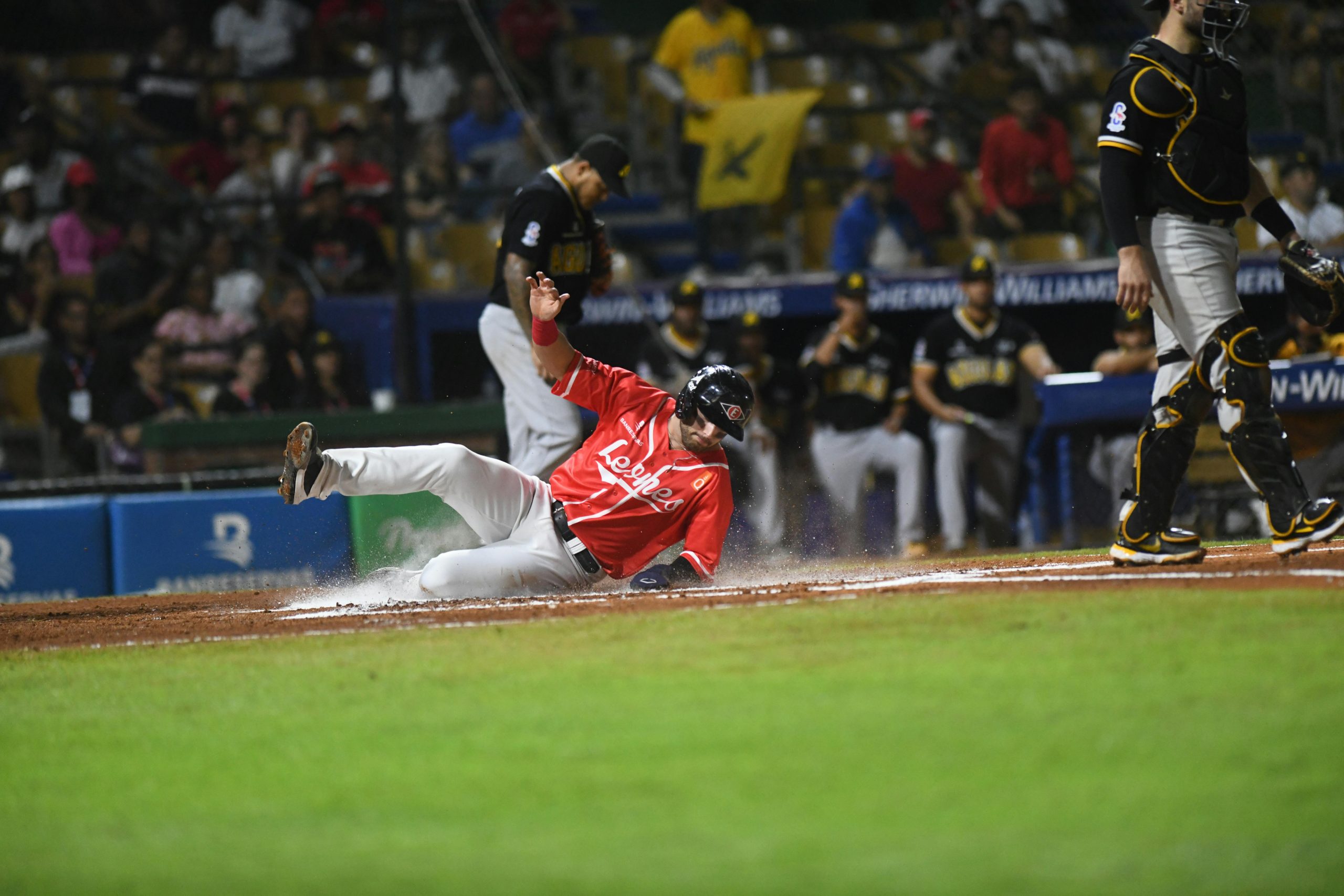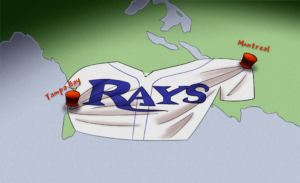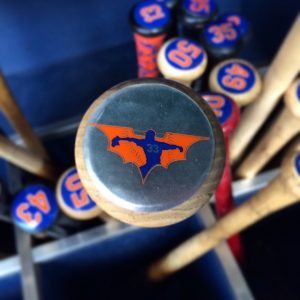In the Dominican Republic, baseball is more than a sport — it’s a way of life. As the Toronto Blue Jays pushed the 2025 World Series to the brink, Dominican superstar Vladimir Guerrero Jr. rewrote postseason history with eight homers and a .397 batting average. His tiny island has produced historically elite baseball talent and continues to be a baseball superpower, begging the question: Why are Dominicans so good at baseball?
The answer varies depending on whom you ask. Junior Noboa, commissioner of baseball for the Dominican Republic and the Arizona Diamondbacks’ vice president of Latin operations, believes there exists a spiritual layer to the connection.
“I’ve always said that it’s a blessing from God, and for Dominicans, this is their passion,” Noboa said.
Vitelio Mejía, president of the Dominican Winter League (LIDOM), said in an interview with the Voice that it’s a combination of raw talent and cultural factors.
“It’s not just about having the passion. Besides aptitude, there is also the willingness, the desire to improve one’s socio-economic status,” Mejía said.
For many Dominicans, baseball offers a path towards a better future.
“It’s a way out of poverty for a lot of people,” Moisés Alou said, former Major League Baseball (MLB) player, in an interview with the Voice. “People see their future in baseball. They invest in their kids for their future.”
According to Alou, this belief means that a career in baseball is a beacon of hope. For many, a child’s success in baseball is not just a personal achievement, but a chance to change the entire family’s financial trajectory.
Alou’s own story exemplifies how baseball can change everything.
“To me, it was my way out of the island. I wanted to get a scholarship to go to school in the United States. I wanted to save that money for my mom. So, I got a scholarship,” Alou said.
Alou explained that baseball first opened doors to education. He started at a junior college in the United States, hoping strong performance on the field would earn him a scholarship to a four-year university. That pursuit of opportunity, he said, ultimately led him to a professional contract with the Pittsburgh Pirates.
That pursuit of opportunity intertwines with something less quantifiable: a deep, inherited love for the game. Like much of the world, in the Dominican Republic, baseball fandom is passed down through generations.
“My father brought me in ‘59 here the first time and told me which team I was for without even entering the stadium. Then I brought my children. Now, I bring my grandchildren.” Mejía said. “The fandom is inherited.”
This generational love for the game is fundamental to understanding how entrenched baseball is in Dominican culture.
“Dominicans get divorced. But Dominicans do not ever change their baseball team,” Mejía said.
Omar Minaya, current special assistant to the general manager of the New York Yankees and one of the most influential figures in Dominican baseball development, offered insight into how the history of baseball in the Dominican Republic also plays a significant role in its dominance today.
“The reason that baseball is prevalent in the Dominican goes back to when it was brought there; the Caribbean basin was fertile ground for the sport,” said Minaya in an interview with the Voice.
Baseball was introduced to the island by Cuban immigrants in the late 19th century. It became deeply rooted in the country’s culture over the following decades, as sugar mill teams, local amateur leagues, and government-sponsored clubs helped spread the fame across towns and rural communities. By the early 1980s, the Dominican Republic had clearly emerged as one of the world’s leading exporters of baseball talent.
The historical foundation paved the way for successive generations of players who now make up a significant portion of MLB rosters.
“One generation follows another one,” Alou said. “We started with one guy that first came up, then there were five guys in the big league, then 10, then 40, and now we are up to a hundred in the major leagues.”
While drive and skill lay the foundation, structured training is key to transforming natural aptitude into major-league potential. MLB-affiliated academies, which emerged in the Dominican Republic in the late 1980s, have played a vital role in developing top-tier players.
“All 30 major league teams have an academy in the Dominican Republic,” Minaya said. “These academies provide not only baseball training but also education, discipline, and life skills.”
These academies are instrumental in shaping future stars. The rigorous training they provide includes everything from physical conditioning to mental preparation, preparing young players for the demanding journey ahead. But their role doesn’t stop at developing athleticism.
“The academies have filled a gap in playing experience, strength conditioning, nutrition, and education,” Minaya said.
He explained that these training programs ensure that players not only have the tools to succeed on the field but are also prepared for the challenges of life in the United States and the professional sports world.
José Gómez, Pro Scout for the Tampa Bay Rays and Vice President of Baseball Operations for Escogido Baseball Club, a prominent team in the Dominican winter league, emphasized the importance of these academies.
“In the DR, we focus more on the ability to project how likely they are to improve when they get into a competitive environment,” he said. “We don’t have real school baseball like high school baseball or college baseball. Those guys start working out on what are called programs, independent trainers that work with the players.”
In addition to the academies, the LIDOM is crucial in fostering the development of Dominican baseball talent. Known for its competitive environment, LIDOM is considered the best winter league globally, and the best overall after MLB and Japan’s league, Nippon Professional Baseball. Winter leagues operate during MLB’s offseason, allowing major leaguers, top prospects, and rising talents to keep playing and stay sharp when U.S. stadiums go dark.
“The competition here is fierce, and it helps young players develop,” Mejía said. “LIDOM has been a development league for both Dominican and American prospects.”
Through LIDOM, young players gain exposure and experience playing alongside established major league players, which accelerates their development and prepares them for the rigors of professional baseball.
“LIDOM has provided a platform for young Dominican players to be seen by MLB scouts, and many players have used it as a stepping stone to reach the big leagues,” Mejía said.
Despite the strong infrastructure of formal training, other informal recruitment practices pose significant challenges.
“The biggest issue is the informal market. Many of these players are being exploited, and there is little regulation,” Mejía said.
These independent recruiters, known as “buscones,” often start working with boys as young as 12 or 13 years old before MLB teams are officially allowed to evaluate or sign them at age 16. Some of these players ultimately do reach Major League Baseball, but this unregulated system creates significant risks, including age falsification, early doping, and pressure to hide injuries in order to secure a future signing bonus.
Alou emphasized that these practices must be curtailed.
“The kids are being pushed too hard, too early,” he said. “There needs to be more regulation to protect them.”
To address these issues, many stakeholders who work in or regulate the international signing system suggest introducing a formal international draft in Dominican baseball.
However, this introduction has sparked debate. The proposal faces strong opposition in the Dominican Republic. Critics argue that the draft serves as a cost-cutting measure for MLB teams. Under the current system, teams can sign players at a young age, often with large signing bonuses, incentivizing early commitments. An international draft would replace this open signing system with a regulated process similar to the MLB amateur draft in the United States, where teams select eligible players in an assigned order rather than competing through bonuses.
The draft would limit teams to a pool of players with fixed signing bonuses, potentially reducing the financial opportunities available to young players and their families. Opponents also see this as an attempt to save money at the expense of young players’ potential earnings. For many families who view baseball as one of the few paths to economic mobility, the fear is that an international draft could narrow — not expand — the chances for a life-changing payday.
Gio Rodríguez, senior director of Latin America for Creative Artists Agency Sports Baseball, shared his perspective on the potential effects of the international draft, compared to the current system that allows players who might not be the most prominent or attend all the showcases to succeed.
“I think there is opportunity in an international draft,” Rodriguez said. “We’ve always been able to identify the top players on the island. And just like in the United States, where they have a draft and showcases for kids to perform in, I don’t think there’s any harm in that system.”
For years, MLB and the Dominican government have debated how to regulate the country’s booming baseball pipeline without harming young players’ opportunities, and the draft is among the most significant reform proposals on the table.
Mejía expressed his support for the idea, explaining that a structured international draft could bring much-needed order to a system that has long relied on informal deals and under-the-table agreements between trainers and teams.
“The international draft would resolve many of the issues we face today,” Mejía said.
One prevalent issue is the use of Performance Enhancing Drugs (PEDs) among young players. Among independent trainers who begin working with players far before the legal signing age, there is a practice of resorting to PEDs to increase players’ value to MLB teams. Mejía gave an example of how the international draft would reduce this practice.
“If I have a player who is 12, 13, or 14 years old and shows promise, I wouldn’t start investing in him, or worse, engaging in illegal practices like doping, because I wouldn’t know which team will have the right to select him when he reaches draft age,” Mejía said.
Alou also supports the idea.
“The draft needs to happen in the Dominican Republic, unless the government or somebody really does something about regulating those bonus programs,” Alou said.
His concern reflects how deeply the current bonus-driven system has become entrenched in the island’s recruitment pipeline, where early promises and unregulated payments shape players’ futures long before they are eligible to sign.
For supporters of the draft, imposing a formal structure would replace that patchwork system with clearer rules and greater accountability. Both Alou and Mejía said they see the international draft as a way to bring more structure to the recruitment process, ensuring fairness for all players.
Despite the challenges, the future of Dominican baseball looks incredibly bright. Alou is optimistic about the new generation of players.
“The kids are getting better and better now. They throw harder, they’re stronger, and they have more resources,” Alou said.
Alou explained that with better access to training, more professional development, and stronger support systems, the Dominican players of today are primed to continue the country’s dominance in the sport.
“I don’t know if it’s in the water or what, but the talent is unbelievable here,” Alou said.





